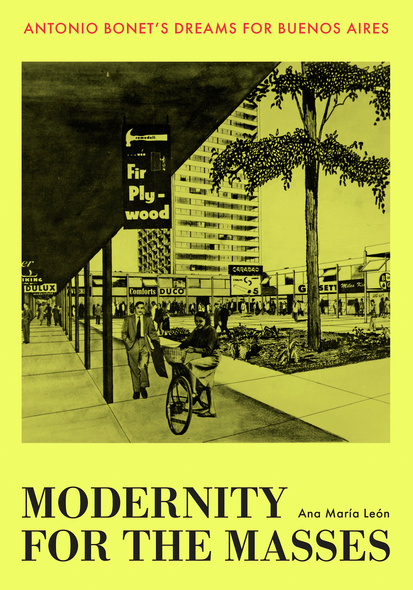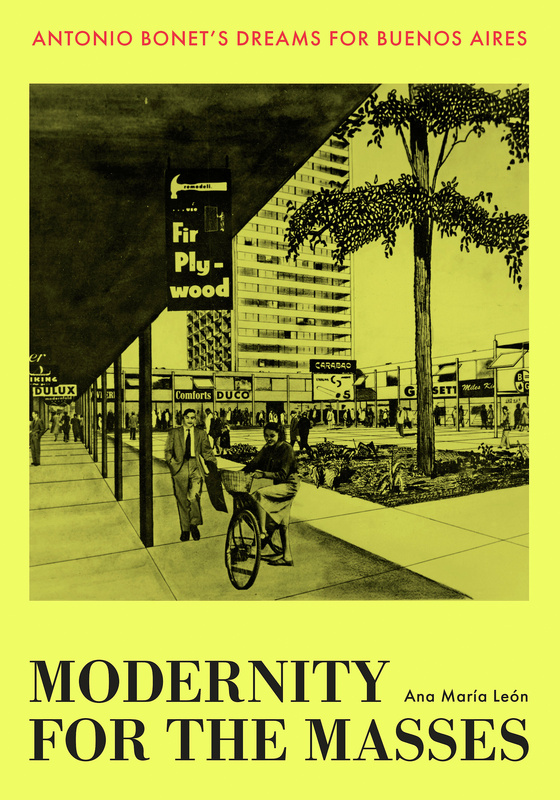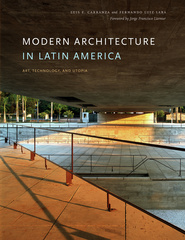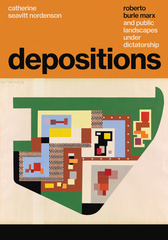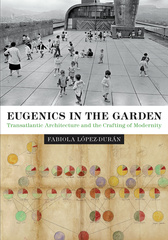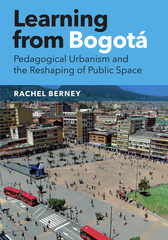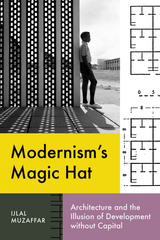Modernity for the Masses
Antonio Bonet's Dreams for Buenos Aires
2022 PROSE Award Finalist in Architecture and Urban Planning
2022 Association for Latin American Art Arvey Foundation Book Award, Honorable Mention
Throughout the early twentieth century, waves of migration brought working-class people to the outskirts of Buenos Aires. This prompted a dilemma: Where should these restive populations be situated relative to the city’s spatial politics? Might housing serve as a tool to discipline their behavior?
Enter Antonio Bonet, a Catalan architect inspired by the transatlantic modernist and surrealist movements. Ana María León follows Bonet's decades-long, state-backed quest to house Buenos Aires's diverse and fractious population. Working with totalitarian and populist regimes, Bonet developed three large-scale housing plans, each scuttled as a new government took over. Yet these incomplete plans—Bonet's dreams—teach us much about the relationship between modernism and state power.
Modernity for the Masses finds in Bonet's projects the disconnect between modern architecture’s discourse of emancipation and the reality of its rationalizing control. Although he and his patrons constantly glorified the people and depicted them in housing plans, Bonet never consulted them. Instead he succumbed to official and elite fears of the people's latent political power. In careful readings of Bonet's work, León discovers the progressive erasure of surrealism's psychological sensitivity, replaced with an impulse, realized in modernist design, to contain the increasingly empowered population.
León’s meticulous reading of [Antonio Bonet's] work in its architectural, political, and philosophical contexts underscores both the creativity and contradictions of trans-Atlantic modernities…Recommended.
A major contribution to the history of modern architecture in the Americas.
While Modernity for the Masses is indeed anchored by Bonet’s architectural designs, León is careful to paint a full picture of the vast, complex cultural and political context from which they emerged...Modernity for the Masses is instructive in the way it clearly distinguishes between architectural aspirations and the actual (or potential) impact a building has in the world. With a keen, skeptical eye, León shows what comes of form when it mixes with structural and systemic forces. Try as architects might, they will never control the conditions in which their designs are built, nor those by which their creations are received.
[A] fascinating study...León extracts surprisingly revelatory insights...León’s analysis illuminates both the transnational history of modernist architecture and the twists and turns of Argentine politics in the middle decades of the twentieth century...The book raises provocative new questions about the role of transnational modernism in Argentina and about the efforts of governments and architects to house—and to control—the masses.
Modernity for the Masses is thoroughly researched and beautifully written and edited. This is an evocative history, rich in intriguing crossings between Buenos Aires, Barcelona, Paris, and other cities. It will surely interest historians of architecture and historians of Latin America...León offers a rich account of the architectural field and the larger context in which architecture is conceived, consumed, and understood.
[A] valuable contribution to architectural history and Latin American studies...Focused on the intersection of spatial politics and the politics of the Argentine state through the lens of Catalan architect Antonio Bonet, León reveals the intertwined histories of modern architecture and statecraft through an analysis of mass housing...Modernity for the Masses strikes a balance between the detail of a single architect and the broader social and cultural context within which he worked, offering a clear representation of how Bonet was both a product and a creator of the architectural milieu of his time.
Modernity for the Masses makes a significant contribution to the history of modernist architecture and urban planning and to the history of modernist architecture’s connection with politics, ideology, and state-led modernizing projects in Latin America. Leo´ n achieves this via an interdisciplinary scope that connects architecture, art, literature, and psychoanalysis. For those interested in the history of the circulation of architectural and urban planning ideas, the book’s decolonial theoretical framework will also pose new questions about the role of experts and their dreams for modernity for the masses.
León’s book offers us a profound history of the illusory promises entwined in political and architectural histories in Argentina and globally. It is a narrative of shared and unrealized dreams . . . The stakes of those unrealized visions are by no means inconsequential. They represent the anxieties and desires at the root of modernist art and architecture, which at certain points and places in history become indistinguishable from the origins of totalitarianism.
Modernity for the Masses offers a fascinating exploration of what happened when avant-garde modernist architecture met the social and political realities of mid-twentieth-century Latin America. Focused on the transatlantic crossings of Antonio Bonet and his projects for Buenos Aires, this book is replete with insights on the era’s spatial politics. Written with great flair, León’s book shows how modernist architects yearned to transform the lives of social majorities, while demonstrating how popular movements and state power shaped their scope of action. It makes an intriguing case for why failed dreams can reveal as much as those that were realized.
Modernity for the Masses poses two key modernist questions: how do you house 'the masses,' and how do you improve city life with built form? Ana María León explores answers through a study of Antonio Bonet’s largely unbuilt housing proposals in Buenos Aires—work that would otherwise be ignored in the canon of modern history—and along the way maps out the fertile intellectual entanglements that informed Bonet’s work as an architect, theorist, and urbanist. This is an important work that will appeal to anyone interested in Latin American architecture or modern architecture in general.
In Modernity for the Masses, Ana María León illuminates the evolution of the discourse surrounding modernist multifamily housing in Argentina’s capital between the 1930s and the 1950s. In Buenos Aires, as elsewhere in and beyond Latin America, this discourse evolved as a result of interactions between architects, planners, politicians, artists, and writers. With fluid precision, Ana María León places the work of architect Antonio Bonet within an international cast of characters—Le Corbusier, Jorge Luis Borges, Grete Stern, and others—tracing their conversations within and across their fields. The result is a thoroughly researched, methodologically innovative study that contributes in important ways not only to the literature on twentieth-century architecture and urbanism in Argentina but also to scholarly understanding of the transnational and transdisciplinary nature of modernist architecture, art, and literature on both sides of the Atlantic in the decades before and after World War II.
Ana María León is an architect and a historian of objects, buildings, and landscapes. An assistant professor at the University of Michigan, León has cofounded several collaborations created to broaden the reach of architectural history, including the Feminist Art and Architecture Collaborative, the Settler Colonial City Project, and Nuestro Norte es el Sur. She sits on the board of the Global Architectural History Teaching Collaborative, the Architecture Lobby, and Anales de Arquitectura, and is an editor-at-large at the Avery Review.
1. A Wandering Ship
2. The Machine in the Pampas
3. The Peronist Unconscious
4. Eternal Returns
Conclusion
Acknowledgments
Abbreviations
Notes
Index

